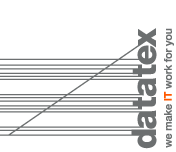
IT ‘complex projects’ and so-called ‘smart working’
ENG
 Since I have been thinking about the bottom of the cup for a long time, I thought I would collect some thoughts in the following lines.
Since I have been thinking about the bottom of the cup for a long time, I thought I would collect some thoughts in the following lines.
I am fully aware that this is a dirty and to some extent even divisive subject, but given my venerable age and long experience, I cannot avoid saying how (I think) things really are.
Does it make sense for those who do my work, our work, to work in so-called “smart working” or even “full remote” mode?
Does it make sense for project managers, those who primarily manage complex IT projects?
Does it make sense for analysts and developers?
To what extent are the activities of these individuals equally (or more) effective, not to mention equally (or more) compatible with remote working?
More than three years after the outbreak of the Covid emergency, and more than one year after the end of this emergency, the question can now be addressed in the right way, calmly, without health concerns and obligations/implications that are now – thankfully – outdated.
Before Covid, smart working – also, but not only, in the IT world – was a rather rare and conceptually underestimated phenomenon, especially in Europe.
In 2020 – for reasons of force majeure – it has been accepted – by all of us, in every latitude and longitude – to work, to study, to ‘live’ at a distance, first as a ‘necessary evil’ to cope with the causes and effects of the pandemic, and then increasingly – with a semantic shift that has been reversed over time – as a ‘valid opportunity’ or even – as far as the ‘working’ part of life is concerned – as an ‘unavoidable feature’ of work in the contemporary world.
The key to this evolution of “shared thinking” can be summed up in these almost clichéd words:
“…after all, it is THE SAME THING for a project manager, an analyst, or a developer to work from home – or from a hotel room in a famous mountain resort – instead of going to the company’s offices and/or the customer’s premises…”.
This assertion, however, as it has more or less subliminally crept into the common way of thinking, does not reflect the objective and factual truth, and is probably only more “digestible” because it comes in most cases from people who have most likely never worked in a software house.
Most of the modeling and system configuration activities in recent years – apart from newly acquired customers – have been aimed at increasing the level of process automation, with a view to Industry 4.0 and a wink at the new frontiers related to the magnum ocean of artificial intelligence.
This process, which has a precise historical background, represents a (great) opportunity for companies, but it cannot disregard those purely “human” activities, which we could define as “high-level” – which are upstream – of study, discussion, comparison, analysis, sharing, deepening and planning.
And these activities have always taken place, and continue to take place, much faster and more profitably through interactions and communications that take place “in presence”, face to face.
From a purely “technical” point of view, today it is possible to perform the design and implementation of an ERP system completely remotely, and theoretically any activity, even complex analysis and modeling of data systems, but it is NOT THE SAME THING as performing these activities face to face, elbow to elbow, in teamwork, either in the offices of the software house or in direct contact with people – all people, from key users to the most dedicated employees – of the client company.
It is not the same thing, because the project, especially in its “infant” stage – working from remote – inevitably becomes more difficult, more unruly, more complicated and therefore more time-consuming and, in the end, more costly for everyone, for the supplier and for the customer, and this fact is supported by countless concrete cases, in practically every software house, of any size.
There is an objective fact when performing modeling and configuration activities, and perhaps even some programming, completely remotely: time is lost in understanding each other, time is wasted in defining communication schedules, at least doubled, because communication – even when people are used to communicating remotely – expands in repetitions, redundancies, misunderstandings, requests for clarification, further misunderstandings, difficulties in unraveling situations that almost always become (much) easier to handle vis-à-vis.
The issue of smart working in the IT sector is often misplaced because the real problem is not one of technology, but one of productivity related to the way people relate and communicate.
Sometimes it is the client companies of software houses themselves that suggest remote working modes to save on reimbursements and travel expenses for project managers, analysts and sometimes even programmers, but with remote working you end up spending more simply because the productivity as a whole – from feasibility study to final system test – degrades and inexorably decreases.
Some might say:
But do you really believe what you are saying? Isn’t that just your personal opinion?
Of course, this risk is always present, especially in cases like this where, like it or not, so-called “opposing sides” are created.
But in recent years there have been many, too many objective situations in which I have personally said to myself: “this problem would have been solved in half a day with them (the customer, ed.)… and brilliantly…” or “this impasse would have melted away like snow in the sun in half an hour with the programmers…”.
This is the reason why Datatex, like all major software houses, continues to have offices and physical locations all over the world, in order to follow customer projects in the best possible way and to promote teamwork, creating different teams in different territories and in the most diverse contexts.
And if we want to dot the “i’s” to complete the argument, as a great proponent of smart work imposed by the pandemic, as well as a leader in tools for remote work, Google, as of June 13, is calling its employees back to the office.
Gosh, how is it that after Amazon, Apple, Meta and other “giants”, even Google officially declares the era of smart work over and demands that at least some form of hybrid work be considered…?
How come…?
However, just to be on the safe side, smart working in the IT world makes perfect sense, is a great achievement and can be an undeniable advantage…?
Definitely, without a shadow of a doubt, when it comes to CUSTOMER SUPPORT and ASSISTANCE.
Namely.
Once a company’s ERP implementation project has been successfully completed and launched, it is certainly possible – and now commonplace, even mandatory – to provide timely remote support to the customer.
This is a big step forward from the days when you had to travel all the time to provide support, or send and receive the tapes for the AS/400, do an analysis over the phone, and send them back – via courier – complete with corrections, download and installation instructions, and all sorts of other text and physical attachments, and so on…
Something that, for someone under the age of 38/39, is not even comprehensible.
For me, having lived through the IT epic of the late 1980s, the 1990s, and the beginning of the new millennium, remote assistance today is an (almost) fantastic thing and has undoubtedly been a major step forward in the history of applied IT.
But modeling and configuration work, and sometimes even programming, will be done better and faster if we avoid those forms of smart working as an end in itself that too many continue to emphasize and demand today.
Perhaps – and it is neither scandalous nor shameful to admit this – we have been under the illusion that it is “the same” to conduct remote discussions, debates, surveys, operational testing, analysis, education and training, steering committees, unit testing, and system testing.
Can these activities be done remotely?
Yes, they can.
Is it “the same,” i.e., is it the same to do them remotely?
Probably (definitely?) not.
ITA
I “progetti complessi” IT e il cosiddetto “Smart Working”. Benefici, effetti collaterali, limiti, illusioni
Articolo di Gaetano Tonello (Senior Project Manager – Datatex)
Mi è stata chiesta un’opinione nel merito e, dopo aver lasciato per lungo tempo decantare la parte torbida della questione nel fondo della tazzina, ho pensato di riunire alcuni pensieri nelle righe qui di seguito.
Sono perfettamente consapevole che questa è una materia dirimente e, in una certa misura, fors’anche divisiva, però, vista la mia veneranda età e la mia esperienza di lungo corso, non posso esimermi dal dire come (penso che) stiano veramente le cose.
Lavorare in modalità cosiddetta “smart working”, o addirittura “full remote”, ha senso per chi fa il mio, il nostro lavoro…?
Ha senso per i project managers, quelli che in primis gestiscono i progetti informatici complessi…?
Ha senso per gli analysts e i developers?
In che misura le attività di queste figure sono parimenti (o più) efficaci, per non dire parimenti (o più) compatibili con il lavoro “da remoto”?
A oltre tre anni di distanza dall’esplosione dell’emergenza Covid, e a oltre un anno di distanza dalla fine di questa emergenza, la domanda può essere oggi affrontata nel modo giusto, serenamente, al netto di preoccupazioni di tipo sanitario e di obblighi/impellenze che ormai – per fortuna – sono superate.
Prima del Covid lo smart working – anche, ma non solo, nel mondo IT – era un fenomeno piuttosto raro e concettualmente poco apprezzato, soprattutto in Europa.
Nel 2020 – per cause di forza maggiore – si è accettato – tutti, in ogni latitudine e longitudine – di lavorare, di studiare, di “vivere” a distanza, inizialmente come un “male necessario” per fronteggiare le cause e gli effetti della pandemia, e successivamente sempre di più – con uno slittamento semantico diventato nel tempo rovesciamento – come una “valida opportunità” o addirittura – per quanto concerne la parte “lavorativa” della vita – come una “caratteristica imprescindibile” del lavoro nel mondo contemporaneo.
La chiave di volta di questa evoluzione del “pensiero comune” si può riassumere in questi termini, divenuti quasi un “luogo comune”:
“…In fondo, per un project manager, per un analyst o per un developer, è LA STESSA COSA lavorare da casa – o dalla camera dell’Albergo di una famosa località di montagna – anziché recandosi negli uffici dell’azienda e/o presso la sede stessa dei clienti…”.
Questa asserzione però, così come più o meno subliminalmente si è insinuata nel comune modo di pensare, non rispecchia la verità oggettiva e fattuale, e probabilmente risulta più “digeribile” solo perché nella maggior parte dei casi proviene da persone che con ogni probabilità non hanno mai lavorato in una software house.
La maggior parte delle attività di modellizzazione e di configurazione di Sistemi negli ultimi anni si è rivolta – a parte i clienti di nuova acquisizione – al tentativo di innalzare il livello di automatizzazione dei processi, in un’ottica di Industria 4.0 e strizzando l’occhiolino alle nuove frontiere legate al mare magnum dell’Intelligenza Artificiale.
Questo processo, che ha un preciso background storico, rappresenta una (grande) opportunità per le aziende ma non può prescindere da quelle attività prettamente “umane”, che potremmo definire “di alto livello” – che stanno a monte – di studio, discussione, confronto, analisi, condivisione, approfondimento e progettazione.
E queste attività si sono sempre svolte e tutt’oggi si svolgono molto più rapidamente e proficuamente attraverso interazioni e comunicazioni che si estrinsecano “in presenza”, vis-à-vis.
Sul piano meramente e puramente “tecnico”, oggi è possibile svolgere completamente a distanza anche la progettazione e l’implementazione di un sistema ERP, e, in linea teorica, qualsiasi attività anche complessa di analisi e di modellizzazione di sistemi di dati, ma non è LA STESSA COSA rispetto allo svolgimento di queste attività in presenza, faccia a faccia, gomito a gomito, con un lavoro di squadra, sia negli uffici della software house sia a diretto contatto con le persone – tutte le persone, dai key-users alle maestranze più dedicate – dell’azienda cliente.
Non è la stessa cosa perché il progetto, soprattutto nella sua fase “infantile” – lavorando a distanza – diventa inevitabilmente più difficile, più sfilacciato, più complicato, e pertanto più lungo nel tempo, e quindi, alla fine, più costoso per tutti, per il fornitore e per il cliente, e questo è un dato di fatto supportato da innumerevoli casi concreti, praticamente in qualunque software house, di qualunque dimensione.
C’è un dato oggettivo nello svolgimento di attività di modellizzazione e configurazione, e fors’anche in parte di programmazione completamente a distanza: si perde tempo a capirsi, si spreca il tempo nel definire i palinsesti della comunicazione, come minimo raddoppiandolo, perché la comunicazione – anche se le persone sono abituate a comunicare da remoto – si dilata in ripetizioni, ridondanze, fraintendimenti, richieste di chiarimento, ulteriori incomprensioni, difficoltà a sbrogliare situazioni che vis-à-vis diventano quasi sempre (molto) più semplici da gestire.
La questione dello smart working nel settore IT è spesso mal posta perché il vero problema non è di natura tecnologica ma di produttività legata alle modalità di relazione e di comunicazione.
Talvolta sono le stesse aziende clienti delle software house a suggerire modalità di lavoro a distanza, per risparmiare sui rimborsi e sulle spese di viaggio per i project managers, per gli analysts e talvolta addirittura per i programmatori, ma con il lavoro da remoto – tirate le somme – si finisce per spendere di più, semplicemente perché la produttività nel suo complesso – dallo studio di fattibilità fino al system test finale – degrada e diminuisce inesorabilmente.
Qualcuno potrebbe dire:
“Ma sei proprio convinto di quello che dici…? Ma non ti sfiora il dubbio che invece questa sia solo la tua personalissima opinione…?
Certo, questo rischio c’è sempre, soprattutto in casi come questo dove, volenti o nolenti, si vengono a creare i cosiddetti “schieramenti opposti”.
Ma negli ultimi anni sono davvero molte, troppe, le situazioni oggettive in cui mi sono personalmente trovato e mi sono detto: “questa rogna, in mezza giornata là da loro (il cliente, n.d.r.) si sarebbe risolta… e pure brillantemente…” oppure “questa impasse, in mezz’ora con i programmatori, si sarebbe sciolta come neve al sole…”
Questo che ho cercato di sviscerare, è il motivo per il quale Datatex, come tutte le più importanti software house, continua ad avere uffici e sedi fisiche in tutto il mondo, per poter seguire al meglio i progetti sui clienti e per favorire il lavoro di squadra, creando diversi teams di lavoro nei diversi territori e nei più variegati contesti.
Se poi, a chiosa del ragionamento, vogliamo mettere i puntini sulle “i”, da grande fautore dello smart working, imposto dalla pandemia, nonché leader negli strumenti per il lavoro da remoto, Google, dal 13 Giugno u.s., sta richiamando in ufficio i propri dipendenti.
Perbacco, come mai dopo Amazon, Apple, Meta e altri “giganti”, anche Google dichiara ufficialmente finita l’era dello smart working e chiede di considerare almeno una forma di lavoro ibrida…?
Come mai…?
Detto ciò, giusto per non sbattere sul tavolo qualcosa a senso unico, quando lo smart working nel mondo IT ha invece perfettamente senso, e anzi è una grande conquista, e può rappresentare un vantaggio indiscutibile…?
Sicuramente, senza ombra di dubbio, per quanto riguarda il SUPPORTO e l’ASSISTENZA ai clienti.
Ovvero.
Una volta portato a termine e avviato con successo il progetto per l’implementazione dell’ERP aziendale, allora è certamente possibile – e oggi è normale, nonché doveroso – intervenire tempestivamente da remoto per fornire assistenza al cliente.
Questo rappresenta un importantissimo passo in avanti rispetto all’epoca in cui per fare assistenza ci si doveva spostare continuamente, oppure inviare/ricevere le “cassette” per l’AS/400, fare un’analisi al telefono e rimandare il tutto – tramite un corriere – con tanto di correzioni, istruzioni per scaricarle e installarle e altri testi e allegati fisici di ogni genere, e via discorrendo…
Un qualcosa che, per chi ha meno di 38/39 anni, non è nemmeno comprensibile.
L’assistenza a distanza oggi – per me che ho vissuto l’epopea IT della fine degli anni ’80, gli anni ’90 e l’inizio del nuovo millennio, è una cosa (quasi) fantastica, è ha rappresentato fuor di dubbio un grande passo in avanti nella storia dell’informatica applicata.
Ma i lavori di modellizzazione e configurazione, e a volte anche di programmazione, si fanno meglio e più rapidamente se si evitano quelle forme di smart working fine a se stesse che troppi oggi continuano ad enfatizzare e a pretendere.
Forse – e non è né scandaloso né vergognoso ammetterlo – ci si è illusi che “fosse uguale” fare da remoto discussioni, ragionamenti, confronti d’opinione, verifiche operative, analisi, education e training, steering committe, unit tests e system tests.
Si possono fare queste attività da remoto?
Sì.
È “uguale”, ovvero è la stessa cosa svolgerle da remoto?
Probabilmente (assolutamente..?) no.

